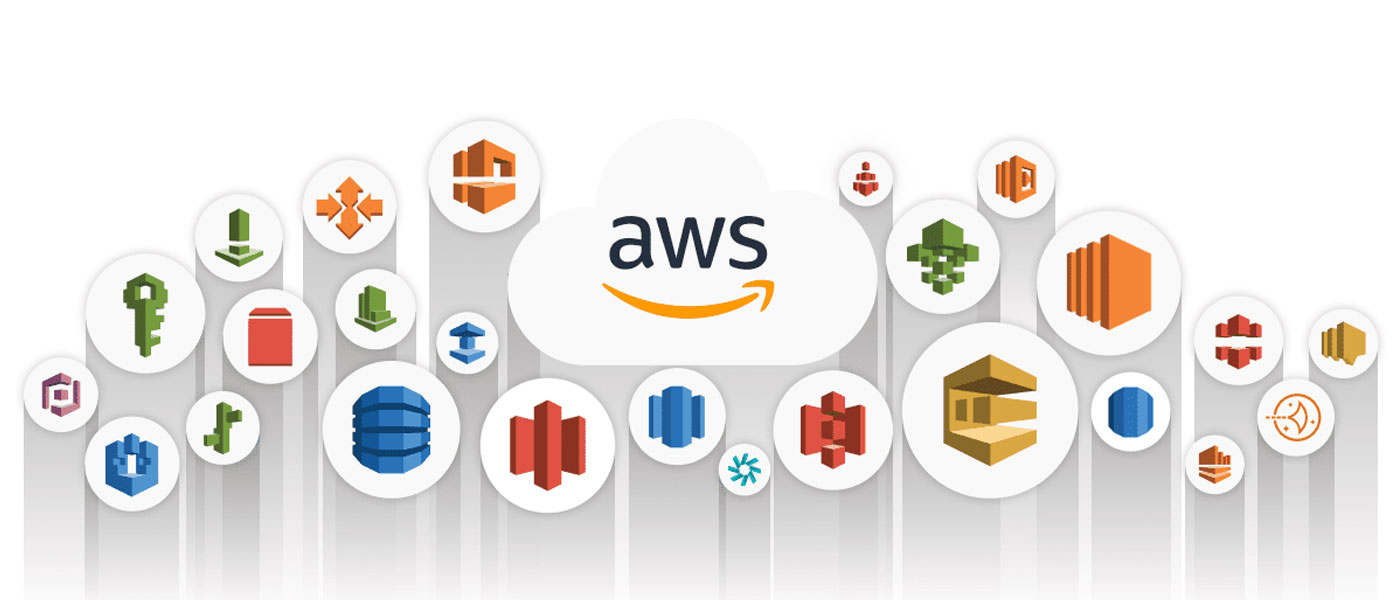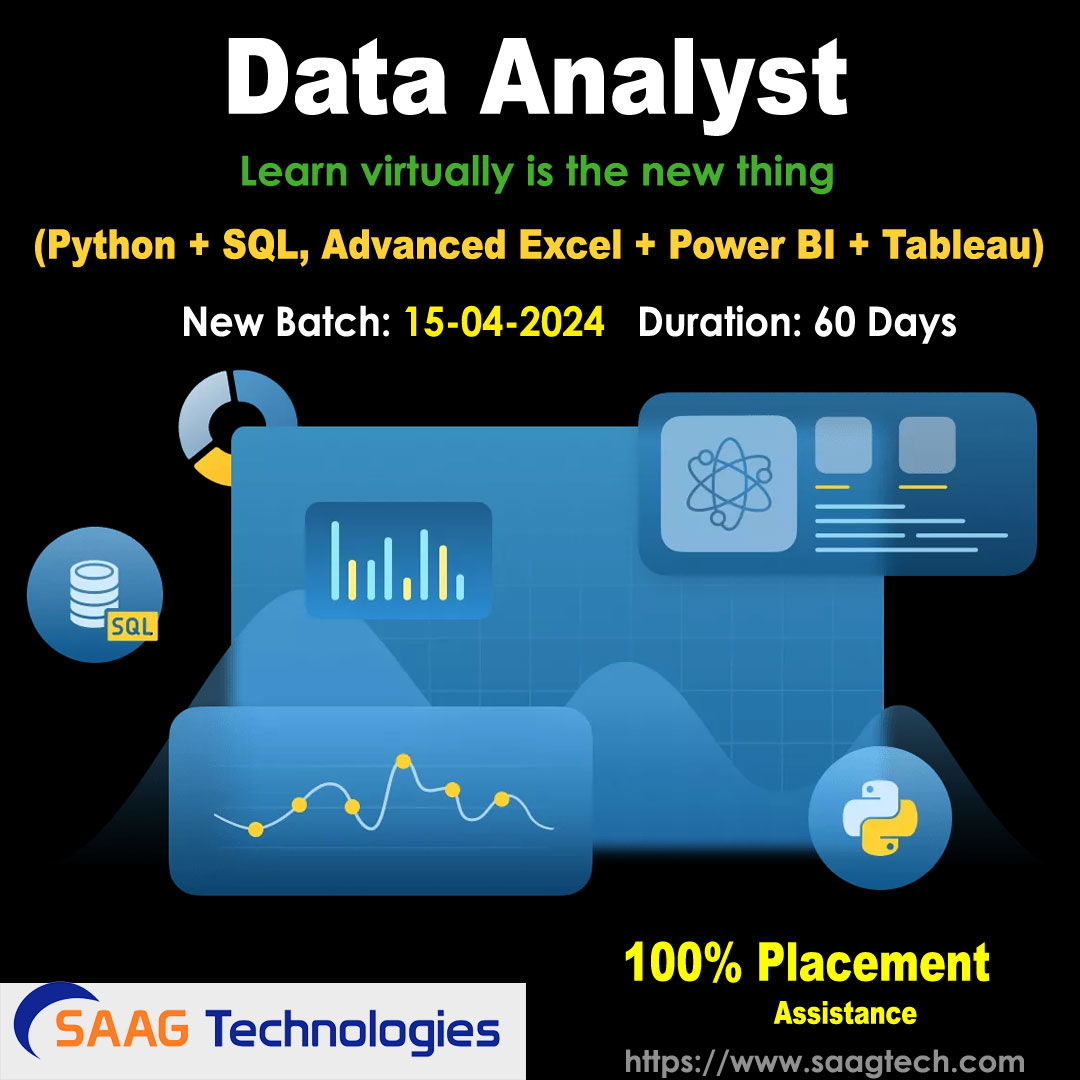
Overview: According to Forbes, Gartner predicts the worldwide public cloud service market will grow from $182.4B in 2018 to $331.2B in 2022, attaining a CAGR of 12.6%. SAAG Tech AWS certification course will help you land in high-paying job & position as AWS Architect. What will you learn?
- Efficient design and deployment of the AWS system
- Cost-evaluation and cost-control mechanisms
- Elastic Load Balancing on multiple EC2 instances
- Data ingress and egress on AWS
- Identifying relevant and suitable uses of AWS architecture
- Lift and shift mechanism of AWS on-premises applications
- Finding the right solutions based on computational, database, and security needs
- And of course, be AWS Solutions Architect exam ready!
Course Skills Covered:
- Designing Identity Solutions
- Managing Security
- Designing Data Storage Solutions
- Monitoring Cloud Solutions
- Designing Resilient AWS Solutions
- AWS Cloud Cost Optimization
Minimum Eligibility: Bachelor’s Degree with 50% or equivalent passing marks. Prior coding knowledge recommended. Who Is This Course For? Anyone who wishes to gain a foothold in AWS: Open to all Engineers, Software/IT, Data & other professionals. Course Duration: 40 Days Also you will benefit:
- Interview Questions
- Soft Skills
- 100% Placement
Job Role: AWS Architect , AWS Engineer, AWS Developer, AWS Lead, AWS Platform Engineer, System Engineer, Site Reliability Engineer, Solution Architect.
AWS Course Covered
EC2
Elastic Beanstalk
S3
Glacier
RDS
VPC
IAM
Simple Queue Service
Simple Notification Service
Simple Email service
Cloud Front
Route 53
Snowball
CodeDeploy
CodePipeline
CloudWatch
CloudFormation
OpsWorks
Cloud trails
Kinesis
Storage Gateway
Basic Concepts and Elastic Compute Cloud (EC2)
- Introduction
- Cloud Computing
- Signing Up For a Free Tier Account
- Free Tier Limitations
- Creating a Billing Alarm
- AWS Global Infrastructure
- Accessing Global Infrastructure via Management Console
- Elastic Compute Cloud (EC2)
- Amazon Machine Image (AMI)
- Security Groups
- AWS Certificate Manager (ACM)
Getting Started with Amazon EC2 Linux Instances
- Choosing AMI, Instance Type & Configuring Instance Details
- Configuring Advanced Details
- Configuring Storage, Tag, Security Group & Key Pair
- Connecting to Linux Instance from Mac
- Connecting to Linux Instance from Windows PC
Getting Started with Amazon EC2 Windows Instances
- Launching a Windows Instance
- Getting connected to Windows Instance from Mac
- Getting Connected to Windows Instance from Windows PC
Public IPs vs. Elastic IPs
- Static Behavior of Elastic IPs
- Performing Manual Failover using Elastic IPs
- Understanding Elastic IP Charges
An Introduction to Command Line Interface (CLI)
- Install the AWS Command Line Interface on Microsoft Windows
- Configure the AWS Command Line Interface
Launch an Instance via Command Line Interface
- Create a security group and define its inbound rules
- Create a key pair and download the private key
- Finally, launch an EC2 Instance
Load Balancer
- Overview of Load Balancer
- Creating Internet-Facing ELB–>Steps
- Creating SGs for ELB and EC2 Instances
- Selecting a LB Type and Defining It
- Assigning SG to ELB & Uploading SSL Certificate
- Configuring Health Check for Our EC2 Instances
- Registering EC2 Instances and Tagging
Auto Scaling
- An Introduction to Auto Scaling
- Benefits of Auto Scaling
- Components of Auto Scaling
- Auto Scaling Basic Lifecycle
- Creating Launch Configuration
- Start Configuring Our ASG
- Configuring Advanced Details
- Configuring Scaling Policies
- Configuring Notifications, Reviewing and Launching Auto Scaling Group
- Testing our Auto Scaling Group
- Setting Up a Scaled & Load Balanced App–>Configuring Schedule Based Policies
- Setting Up a Scaled & Load Balanced Application via CLI
Virtual Private Cloud (VPC)
- VPC Essentials
- Subnets
- Other Basic Concepts
- Default vs. Non-Default VPC
- Internet Gateway (IGW)
- NAT Gateway
- Route Tables
- Building our First Non-Default VPC
- Access Control List (ACL)
- Configuring our Access Control List
- Overview of VPC Peering
- VPC Peering Configuration
Route 53
- Overview of Route 53
- Benefits and Functionalities of Route 53
- Hosted Zones, Name Servers and SOA
- Scenario 1–>Routing the domain’s traffic to an instance in a VPC
- Scenario 2–>Routing our domain’s traffic towards the Load Balancer
- Scenario 3–>Performing DNS failover using the Health Check feature
Identity & Access Management (IAM)
- An Introduction to Identity and Access Management (IAM)
- Overview of Roles
- Creating Users
- Signing In On Behalf Of Sub Accounts
- Creating and Managing Groups
- Implementation of Roles
- Password Policy
- Enabling Multi-Factor Authentication
Elastic Block Store (EBS) — Volumes
- An Introduction to Elastic Block Store(EBS)
- Benefits of EBS Volumes
- Amazon EBS Volume Types
- General Purpose SSD (gp2) Volumes
- Provisioned IOPS SSD (io1) Volumes
- Throughput Optimized HDD (st1) Volumes
- Cold HDD (sc1) Volumes
- Magnetic Volumes
- Attaching EBS Volumes via AWS Management Console
- Creating EBS Volumes via Command Line Interface (CLI)
- Attaching EBS Volumes via Command Line Interface (CLI)
- Making an EBS Volume Available for Use
- Expanding the Storage Space of an EBS Volume on Windows
- Viewing Volume Information
- Detaching an EBS Volume from an Instance via AWS Management Console
- Detaching an EBS Volume from an Instance via Command Line Interface(CLI)
- Deleting an EBS Volume
Elastic Block Store (EBS) — Snapshots
- An Introduction to Snapshots
- Creating Snapshots via AWS Management Console
- Creating Snapshots via Command Line Interface (CLI)
- Viewing Snapshot Information
- Creating Volumes from Snapshots via AWS Management Console
- Creating Volumes from Snapshots via Command Line Interface (CLI)
- Deleting EBS Snapshots
- Copying EBS Snapshot via AWS Management Console
- Copying an EBS Snapshot via Command Line Interface (CLI)
- Overview of Sharing an Amazon EBS Snapshot
- Sharing an EBS Snapshot via AWS Management Console
- Sharing an EBS Snapshot via Command Line Interface (CLI)
Simple Storage Service (S3) and Glacier
- Buckets and Objects
- Creating Bucket and Uploading Objects
- Editing Permissions for S3 Bucket
- Hosting a Static Website
- Versioning
- Lifecycle
- Cross-Region Replication
- Overview of Glacier
- Creating Vault via AWS Management Console
- Creating Vault via Command Line Interface (CLI)
Database
- Introduction to Relational Database Service (RDS)
- DB Subnet Group
- Configuring Database and EC2 Security Groups
- VPC and RDS
- Creating a DB Instance Running the MySQL Database Engine
- Connecting to our RDS DB Instance via MySQL Workbench
- Introduction to DynamoDB
- Creating an Example Table in DynamoDB
CloudFormation, Elastic Beanstalk and OpsWorks
- An Introduction to CloudFormation
- Deploying a Load-Based Auto Scaling Architecture Using CloudFormation Sample
- Elastic Beanstalk
- OpsWorks
Simple Notification Service (SNS) and Cloudwatch
- Overview of SNS
- Simple Notification Service Setup
- Cloudwatch
Storage Gateway and Snowball
- An Introduction to Storage Gateway
- Gateway-Stored Volume Architecture
- Gateway Virtual Tape Library (VTL)
- AWS Import/Export Snowball
Common Troubleshooting Issues and Solutions
Troubleshooting Connectivity Issues
Disaster Recovery

